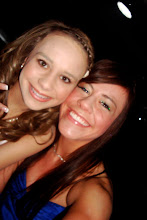The term Renaissance, adopted from the French equivalent of the Italian word rinascita, meaning literally "rebirth," describes the radical comprehensive changes that took place in European culture during the 15th and 16th centuries, bringing about that demise of the Middle Ages embodying for the first time the values of the modern world.
Michelangelo Di Lodovico Buonarroti Sumoni, was an Italian Renaissance sculptor, painter, architect, and poet who exerted an unparalleled influence on the development of Western Art. Michelangelo drew and helped paint the Sistine Chapel in Vatican City. He drew everything in the chapel by himself and then he had professional painters come in and paint it, but he also helped with the painting. Michelangelo was apart of the High Renaissance period.

Michelangelo's drawings and paintings of the Sistine Chapel.
Renaissance artists studied perspective. or the differences in the way things look when they are close to something or far away. Leonardo da Vinci was born in 1452 in the village of Vinci. His name means Leonardo of Vinci. Leonardo began his career working for a master painter in Florence. By 1478, Leonardo left his master and set up his own workshop. People have been trying to guess the secret behind the smile of his Mona Lisa, ever since he painted it around 1505. His Last Supper shows clearly the different feelings of Jesus and his followers.
Leonardo's fame grew, but not just for his painting. Leonardo was truly a "Renaissance Man," skilled in many fields. He was a scientist and an inventor as well as an artist. He made notes and drawings of everything he saw. Leonardo invented clever machines, and even designed imitation wings that he hoped would let a person fly like a bird.

The Mona Lisa that was one of Leonardo's paintings.

The Last Supper that Leonardo did.
Renaissance scholars studied the ancient Latin and Greek texts, scouring the monastic libraries of Europe for works of antiquity that had become obscure, in their quest for improving and perfecting their worldly knowledge. This was in complete contrast to the transcendental spirituality that medieval Christianity stressed. However, that does not mean that they rejected Christianity. On the contrary, much of the greatest works of the Renaissance period was devoted to it, with the Church patronizing a lot of the works of Renaissance art. However, there were subtle changes in the manner in which the intellectuals began to approach religion, which affected the cultural life of the society, which in turn influenced the artists of that period and hence was reflected in their art.



